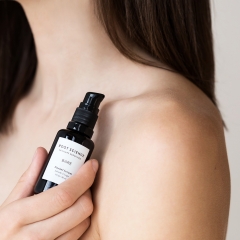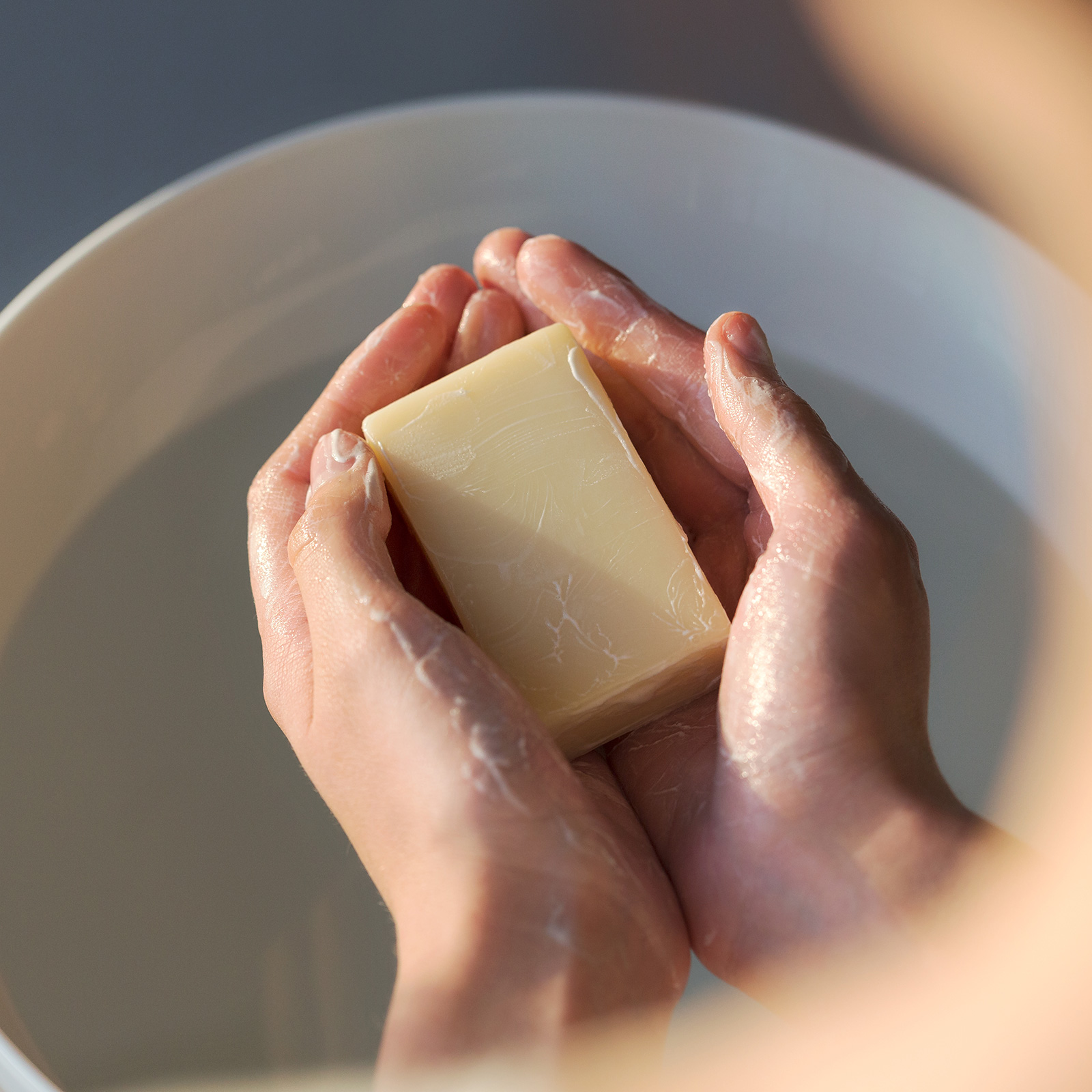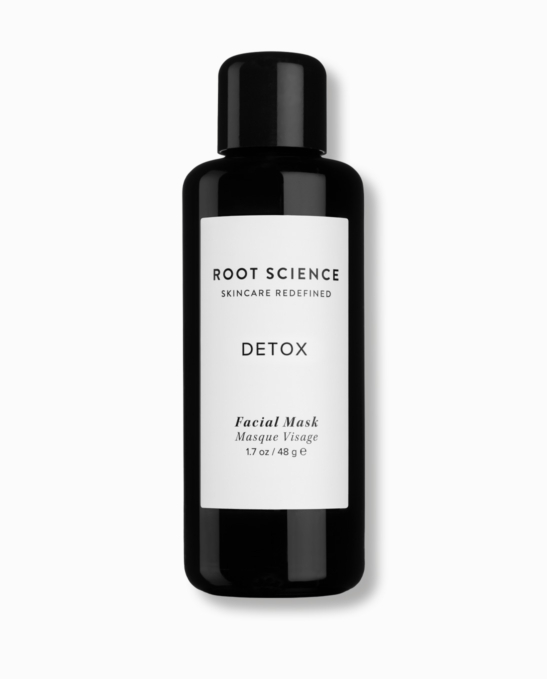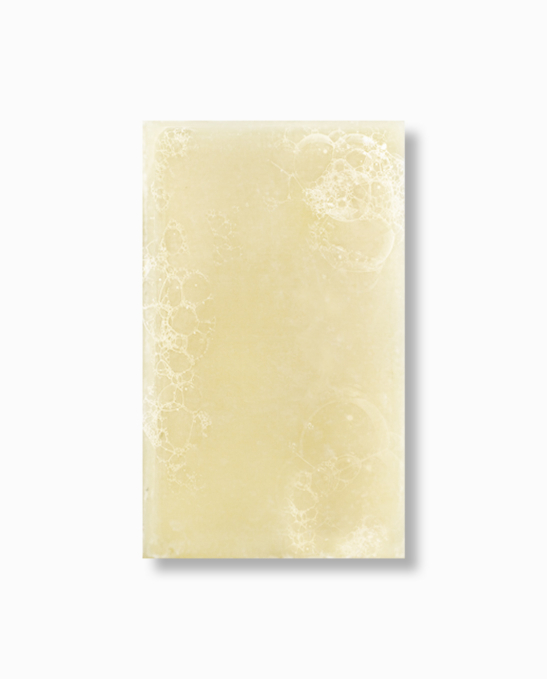Hi there! We’re so happy you landed here and we hope you find what you are looking for. If not, let us know and we will do all we can to help.
If you’re losing your mind over small forehead bumps you can’t get rid of no matter how hard you try, know that you are not alone. These stubborn flesh colored bumps that don’t look like the typical pimple and are impossible to pop (please don’t), go by the name of comedonal acne or subclinical acne. We’ve experienced these first hand and after some trial and error found a way to minimize the appearance of these bumps for good. The best part; we did this without harsh treatments that can often compromise skin health and leave your barrier stripped and damaged.
What Is Subclinical Acne?
Subclinical acne, also known as comedonal acne, are basically pimples forming below the skin. They’re typically colorless bumps that have not broken through the skin or developed a head (closed comedone). These small bumps often show up on the forehead and cheeks. Because these bumps are closed comedones, unlike blackheads which are open and allow treatments to penetrate faster, conventional acne treatments are not as successful at treating these stubborn bumps.
What Causes Subclinical Acne?
These mysterious small forehead bumps are caused by clogged pores, blocked with debris such as dead skin cells and excess sebum. When all is working as it should, your pores release sebum (oil) that travels to the surface of the skin and spreads to create a barrier that helps skin retain moisture. However, when skin function is thrown out of whack, due to common acne culprits such as hormones, poor diet, lifestyle, makeup or skin care routine (or lack of), it can clog pores and create a pimple below the skin. Although the root cause of subclinical acne will vary from person to person, it all boils down to clogged pores.
How To Get Rid Of Subclinical Acne: 5 Simple Steps
You can get rid of forehead bumps and keep your skin feeling healthy, all at the same time. Using the right products consistently along with a healthy dose of patience (deep breath, you’ll get through this) is all it takes to get visibly clear skin — and keep it that way. One of the biggest mistakes people make is looking for a quick fix or overnight results. As the saying goes, all good things take time and so does clear skin.
Cleanse Like A Pro
A consistent cleansing routine will help with forehead bumps. However, many cleansers are capable of doing more harm than good. Avoid cleansers that strip the skin, especially ones that contain synthetic foaming agents such as SLS or cocamidopropyl betaine. These super foaming cleansers are infamous for not only causing irritation but also drying out skin — causing imbalances like excess oil production and acne. Instead, cleanse your skin the way mother nature intended. Use raw honey as a cleanser in the AM or on days where you don’t wear makeup. If you need a deep clean at the end of the day to remove makeup or sunscreen, reach for an oil cleanser. Oil dissolves oil, without disrupting your skin. If you’re new to oil cleansing, a great place to start is with the double cleansing method. Simply massage oil into skin, breaking up makeup, sunscreen, dirt and oil. Then rinse off using a gentle cleanser like our botanical cleansing bar Cleanse.

Organic. Phytoactive. Skin Nourishment.
Looking To Break The Vicious Cycle Of Subclinical Acne?
Upgrade Your Cream To A Facial Oil
We understand that the idea of applying a face oil may feel counterintuitive when dealing with subclinical acne, but in actuality this is one of the best things you can do for your skin. Don’t let the (totally false) oil-free propaganda fool you. To be fair, the oil-free trend was in response to companies using highly-refined, cheap oils (canola, mineral oil, etc.) that clog pores. However, high-quality facial oils using skin compatible ingredients like jojoba, which are non-pore clogging and closely resemble the sebum our own skin produces, are nature’s perfect moisturizer. These oils help to replenish moisture and make excess oil a thing of the past. Plus, they don’t contain cheap fillers found in synthetic creams. Therefore, by using a facial oil you avoid exposing your skin to ingredients that can potentially irritate and clog pores, not to mention harsh preservatives that can harm the healthy bacteria living on your skin. Facial oils made with nutrient-rich plant oils that contain vitamins, antioxidants and skin beautifying properties that may help to break the vicious cycle of subclinical acne.
Mask Weekly To Deep Clean Pores
Some people are born with great skin (thanks to genetics) and some people have to work for it. Luckily for all of us who have to put in the work, mother nature created clay, a powerful skincare ingredient that acts as a natural extraction tool, absorbing excess oil, debris and impurities from the skin, without harm to your pores. Masking weekly with a clay-based mask, such as our clarifying Detox mask (and consistently) helps to decrease the appearance of blemishes and pores. We recommend masking at least 1-2x per week for best results.
Gently Exfoliate
Weekly exfoliation helps to prevent your pores from becoming clogged. Exfoliate like a pro by placing a warm, damp towel over your face for a minute before exfoliating. This helps to loosen the hardened oil and debris clogging pores and allows your exfoliant to work better. When dealing with active subclinical acne, we recommend avoiding aggressively scrubbing your skin. A natural way to exfoliate without scrubbing is to use honey and yogurt as facial masks. Yogurt is a natural way to exfoliate your skin as it contains lactic acid, which helps to dissolve dead skin and leaves it feeling baby soft. Honey is another natural exfoliator that contains a wealth of skin beautifying properties. Use each ingredient as a mask on separate days, at least 1x per week, and leave on for 30 minutes. It’s best to use these kinds of masks before a shower or bath for ease of clean up.
Eat Foods That Support Your Skin
Your diet can affect your health and skin. Eating processed and high glycemic (sugary) foods can cause a domino effect of reactions within the body that can cause excess oil production and skin imbalances that lead to clogged pores and forehead bumps. This is why it’s so important to eat a healthy diet rich in organic, whole foods such as fresh fruits and vegetables. A simple trick to making sure you’re eating healthy is to avoid buying packaged foods and sticking to the outer aisles of your grocery store, where they keep unprocessed food — helping you avoid temptation. We recommend reading up on the basics of an anti-inflammatory diet to help you choose foods that support your skin.
Use Skincare Products With Gentle Ingredients
Every step of your skincare routine should support your skin’s needs. This helps to create an environment in which acne has a hard time thriving in. Contrary to what the highly-marketed acne systems want you to believe, you should not bombard your skin with a routine where every product contains harsh ingredients (like benzoyl peroxide) that can strip your skin, causing it to dry and peel. This forces your skin into a viscous cycle of ups and downs that has no end in sight (that’s how these companies keep you coming back). Instead opt for gentle, blemish-fighting ingredients.
The Best Natural Ingredients For Subclinical Acne
Black Cumin Seed Oil
This powerhouse oil contains thymoquinone, a compound that has potent antioxidant benefits and assists with reducing the appearance of breakouts. *1
Turmeric
Curcumin is the active compound in turmeric that’s been shown to have a number of skin beautifying benefits that make it an effective and natural option for reducing the look of blemishes and clogged pores. *2
Bakuchiol (AKA Nature’s Retinol)
Bakuchiol contains skin beneficial proprieties that make it a viable alternative to retinol. One clinical study conducted demonstrated that 1% bakuchiol applied twice daily visibly reduced blemishes by 57% after only 6 weeks. *3
Clay
Clay binds to excess oil, dirt and build-up, helping to minimize the appearance of breakouts and clogged pores. It also acts as a natural cleanser and gentle exfoliant.
Honey
Raw honey contains B Vitamins, amino acids, antioxidant and minerals such as calcium, copper, iron, magnesium, manganese, phosphorus, potassium and zinc. These not only help to visibly reduce redness and irritation, but also create an environment that visibly promotes a clear, healthy-looking complexion. The soothing properties found in honey have a calming effect and leave your skin feeling super soft.
Pure Aloe Vera From A Fresh Plant
Before you rush off to the store to purchase a bottle of aloe, know that it won’t have the same skin benefits as fresh aloe. Investing in an aloe plant and trimming fresh cuttings as needed is the best way to reap the benefits. Aloe vera contains a wealth of nutrients and organic compounds called anthraquinones, which help to minimize the look of blemishes and redness, making aloe vera a beneficial ingredient for subclinical acne. Apply to skin at night and rinse off in the morning for happy skin.
Yogurt
Topical application of live probiotics, founds in plain yogurt, support healthy-looking skin. Yogurt also contains lactic acid which helps to gently exfoliate and clean pores.
Jojoba Oil
Jojoba oil is a desert island ingredient for any skincare enthusiast. This jack of all trades does it all (and so well). Jojoba oil can be used as an oil cleanser to decongest pores and doubles as your daily moisturizer. The main reason we recommend jojoba for subclinical acne is for it’s chemical structure, which is almost identical to sebum (aka oil our skin produces), making it compatible with most skin. Apply a few drops and gently massage into skin, that’s all you need to turn your finicky complexion into a happy camper.
Tamanu Oil
Tamanu oil contains calophyllic acid, calophyllolide and lactone. Simply put, tamanu oil is a powerhouse ingredient provided by nature. The upside of using tamanu oil over conventional acne products is that it does not come with negative side-effects such as peeling, dry skin or photosensitivity.
Subclinical Acne: Ingredients to Avoid
The best way to visibly reduce these small forehead bumps is to try to keep them from popping up. As urgent as it may seem to find a topical solution to clear these stubborn small forehead pimples, its equally as important to make sure that you aren’t making matters worse by exposing your skin to (sneaky) acne-causing ingredients.
Remove Fragrance & Perfume
Avoid using any skincare or makeup products with fragrance or perfume of any kind. We also highly recommend eliminating scented candles, air fresheners, scented laundry detergent, fabric softener and dryer sheets from your environment. Instead, opt for fragrance-free laundry detergent, wool dryer balls, and unscented, clean burning candles, all of which are healthier for you, your skin, fuzzy friends (speaking to you pet owners) and the planet.
Give Your Skin A Break From Makeup
Natural or not, makeup is not exactly acne-friendly. We encourage you to embrace “wearing” your bare skin — it’s quite liberating. That doesn’t mean you can’t dress up your eyes, just forgo covering your skin in concealer, foundation and powders. However, if makeup is your thing, we’re not here to judge, we simply advise that you give your skin a break from makeup, at least until the bumps clear up.
Avoid These Skincare Ingredients:
— Fragrance & Perfume
— Silicones e.g. dimethicone
— Parabens e.g methylparaben, propylparaben
— Phthalates
— Petrochemicals ( e.g. mineral oil)
— Comedogenic oils and Waxes e.g.coconut oil, emulsifying wax, cacao butter, shea butter, lanolin.
— Synthetic foaming agents e.g. sodium laurel sulfate (SLS) and sodium laureth sulfate (SLES)
— Mica, silica, and talc
— Colorants (FD&C or D&C followed by a number, for example: FD&C Red No. 40)
— Menthol, peppermint, eucalyptus, camphor, and citrus essential oils
The Bottom Line
As frustrating as forehead bumps (aka subclinical acne) can be, trust that it will subside. Treat your skin (and body) with care. As it goes for all skin issues, taking a holistic, internal and external approach is essential in maintaining your best skin. And remember, be patient. All good things take time. As much as we want that overnight transformation, your skin needs time to return to its normal, happy-self. Trust the process.
Shop Featured Products
Disclaimer: This content is for informational and educational purposes only. It is not intended to provide medical advice or to take the place of such advice or treatment from a personal physician. All readers/viewers of this content are advised to consult their doctors or qualified health professionals regarding specific health questions. Neither Root Science nor the publisher of this content takes responsibility for possible health consequences of any person or persons reading or following the information in this educational content. All viewers of this content, especially those taking prescription or over-the-counter medications, should consult their physicians before beginning any skincare, nutrition, supplement or lifestyle program. The views and products expressed are not intended to treat, cure or prevent any disease.
1. https://www.ncbi.nlm.nih.gov/pmc/articles/PMC5735686/
2. https://www.ncbi.nlm.nih.gov/pmc/articles/PMC6770633/
3. https://www.researchgate.net/publication/284931325_Bakuchiol_in_the_management_of_acne-affected_Skin
Image Sources: Green Abstract Painting via Karolina Grabowska



